The Tata Curvv and Citroën Basalt are coupe-SUVs with style in focus, but which is a better buy? We find out.
Almost 17 years after the BMW X6 had the audience gasping with its coupe-SUV design, mass-market manufacturers are using the look to make their SUVs stand out. The Citroën Basalt and the Tata Curvv aim to reel in buyers seeking a bit more style and presence, but of course, without compromising on the features and practicality of a midsize SUV. While the Basalt looks to play the value card with its aggressive pricing, the Curvv banks on loads of equipment and Tata’s well-spread network.
Tata Curvv vs Citroen Basalt design
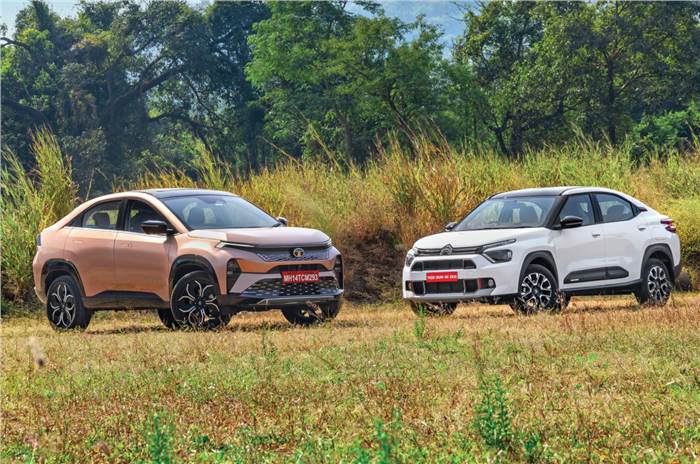
While both are coupe-SUVs, there is a significant difference in their character when it comes to design. The Basalt is more rounded and softer around the corners, whereas the Curvv is edgier and sharper.
Dimensionally, they are neck and neck, with the Basalt edging ahead in terms of length and wheelbase, while the Curvv takes the lead in height and width. On the face, both the Basalt and Curvv bear similarities to their respective siblings, the Aircross and Nexon. It is only in profile that you immediately see the USP. The sloping roofline on the Basalt blends well with the boot and almost looks like a three-box design, while on the Curvv, it extends all the way to the rear with no break in the flow. The Curvv also has an advantage with its bigger 18-inch wheels, compared to the 16-inch alloys on the Basalt, and the design is funkier too. The Curvv also gets flush door handles, unlike the old-school flip-up handles on the Basalt.
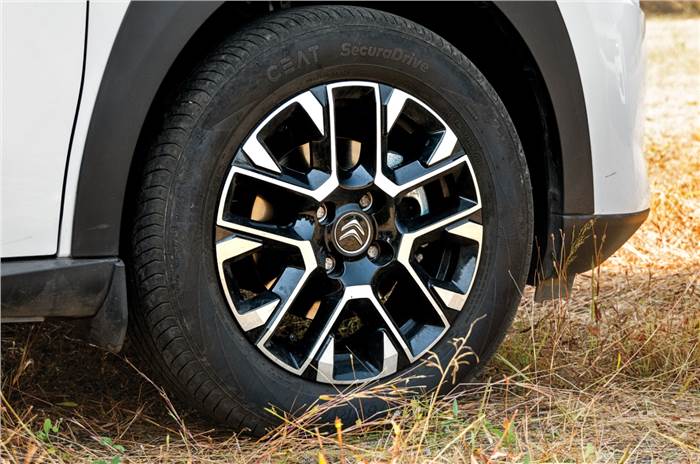
Basalt’s 16-inch wheels are stylish but look small.
The rear looks more dramatic on the Curvv with a connected LED strip and sharp tail-lamps, while the Basalt relies on a simpler, individual tail-lamp setup, albeit with a 3D effect for the housing.
Safe to say, if you want more drama and wow factor, the Curvv is the better choice. However, the Basalt offers a more proportionate stance and an easy-on-the-eye design that buyers greatly appreciate.
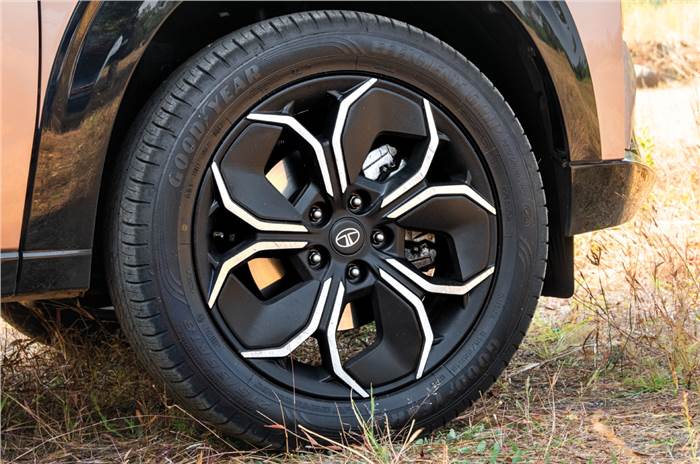
Big 18-inch wheels on the top-spec Curvv, but lower trims get 17-inchers.
Tata Curvv vs Citroen Basalt interior and features
Inside, too, both SUVs have a style-focused design. The Curvv gets a minimalistic dashboard layout with a unique burgundy and silver colour combination that looks upmarket. The 12.3-inch touchscreen is larger than the Basalt’s and has a clean UI. It also gets wireless Apple CarPlay and Android Auto, along with a panoramic sunroof, and as you can see in the features box below, the Curvv gets a lot more kit than the Basalt. The front seats are well-cushioned and get an electric adjustment on top-spec trims, but they ought to have been broader for more comfort. Adults with large frames will find them slightly snug. That said, they do get ventilation, and the upholstery is premium.

Better knee room and airiness in the Basalt’s cabin, but headroom is still tight for tall adults.
The centre console is devoid of any physical buttons, barring the temperature and fan control toggle switches. The gloss black panel smudges easily and attracts dust, scratches and reflections.
In contrast, the interior of the Basalt doesn’t offer the premium appeal of the Curvv and seems old-school. Sure, there are abstract shapes around, but the overall look inside is dated, and the plastics and touch points lack the upmarket feel you get on the Curvv. It gets a smaller 10.2-inch touchscreen, which is slick to use, and offers wireless connectivity and a digital instrument cluster but no sunroof. However, the HVAC controls are physical switches that are easy to use.

The Curvv gets comfortable seats with a reclinable backrest but not enough headroom and space for tall occupants.
The beige seat upholstery gives the cabin an airy feel; the seats are manually adjustable, but more importantly, they offer better comfort for large-frame adults while the cushioning and support are on point with the Curvv. You don’t get the option of cooled seats, though.
Tata Curvv vs Citroen Basalt space and practicality
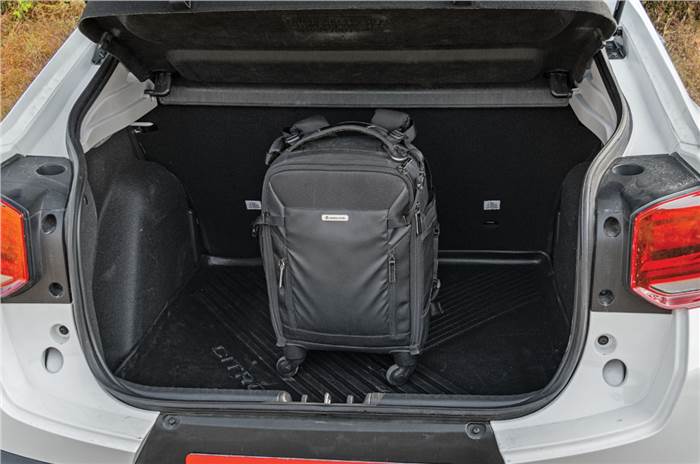
The Citroen’s 475-litre boot is narrow, with a high loading lip.
The one thing that coupe-SUVs have to work around is rear headroom. Thanks to a roofline that gently tapers down, the headroom is just about enough for passengers over six feet tall, and with the larger wheelbase, the Basalt has enough knee room in the rear. Under-thigh support is also good, despite this version missing the unique adjustable under-thigh support, which you get on the top-spec automatic. It also gets rear AC vents and a centre armrest, and the backrest angle isn’t too upright.
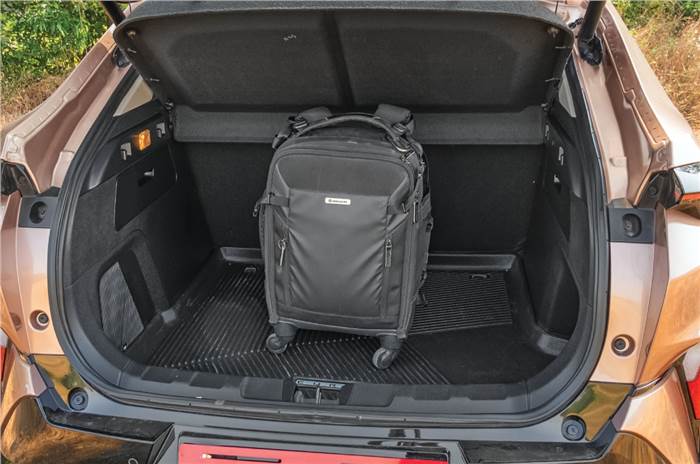
The Curvv’s 500-litre boot is easy to load. Electric tailgate is a plus.
The Curvv, on the other hand, sacrifices more when it comes to rear seat space. The sharp tapering roofline eats into headroom, and the panoramic sunroof mechanism robs away some space, too. Add to that the upright backrest, and passengers over six feet tall will be left wanting more headroom. The knee room and width are nothing to complain about, and the seat comfort on the Curvv is good. However, in this comparison, the Basalt has the advantage courtesy the sense of space.
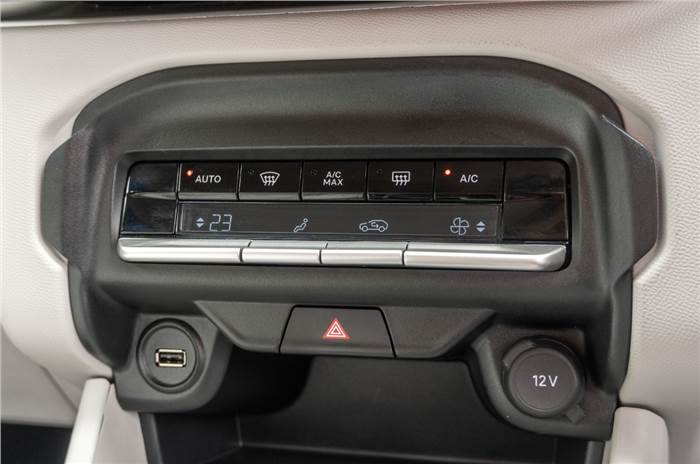
Physical HVAC switches on the Basalt are much nicer and easier to use.
The Curvv is a bit more practical when it comes to boot space, which stands at 500 litres compared to the 470-litre boot on the Basalt. While the difference isn’t much, the Curvv, with its wide opening and low lip, is the easier one to load.
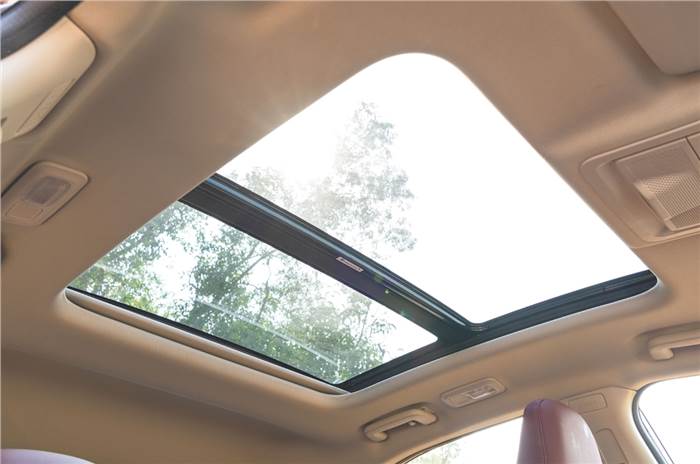
The panoramic sunroof brightens the Curvv’s dark interior.
Tata Curvv vs Citroen Basalt performance
Both SUVs are powered by a 1.2-litre, three-cylinder, turbo-petrol engine with direct injection. The engine in the Basalt makes 110hp and 190Nm, which is 15hp and 35Nm less than the Curvv that puts out 125hp and 225Nm.
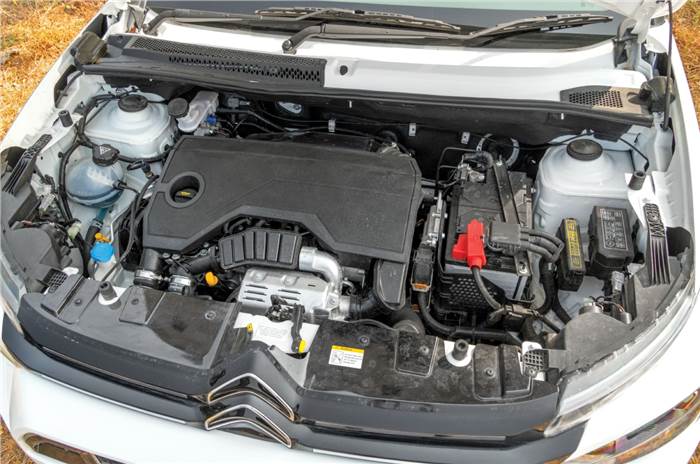
The 110hp engine feels lively, quick and responsive, but it lacks the refinement of the Tata Curvv.
Naturally, you’d expect the Curvv to be the more engaging car to drive, but that’s not the case. While the Curvv is good in refinement, it doesn’t have the initial pep of the Citroen. Off-the-line responses are not lively, and at no point in the rev range do you feel the Curvv surging ahead. Even in the more responsive Sport mode, it is marginally better but feels nowhere near as free as the Basalt. The 6-speed manual gearbox in the Curvv isn’t engaging either. The clutch, although light, has a fair amount of travel, which requires a lot more effort. Then, there is the abrupt bite point at which the clutch engages, which means it is easy to stall the Curvv, especially in bumper-to-bumper traffic. The gear gates, too, aren’t as well-defined, and shifting from second to third gear requires more caution. So, as a fun-to-drive car, the Curvv doesn’t do it.
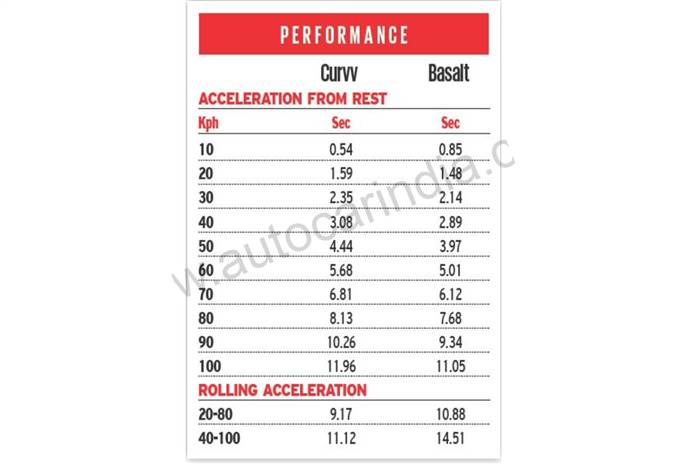
The Basalt, on the other hand, does ‘fun’ a bit better. Despite the power deficit, the Basalt is responsive off the line. There are no modes to select, but as long as you’re in the right gear, you’ll make swift progress. Drop the revs below 2,000rpm, and you’ll land into turbo lag. The gears are easier to slot in, and the clutch is progressive. That said, the refinement is far behind the Curvv. At idle, you can feel vibrations on the steering wheel and even through the seats. Gain speed and a fair amount of engine noise also seeps into the cabin.
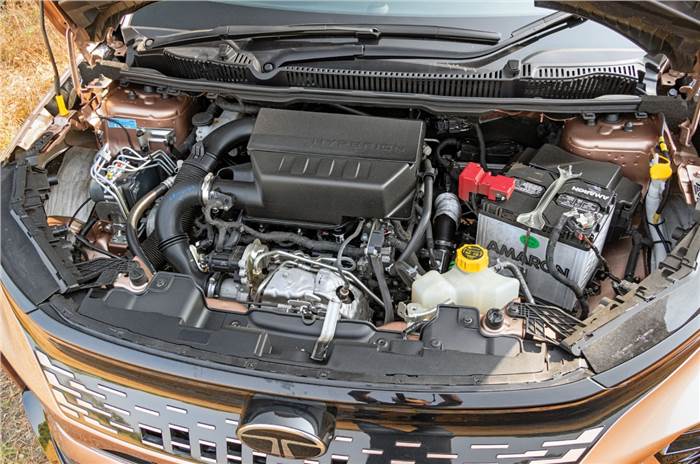
The 125hp engine is more refined, but it’s not as exciting to drive, even with Sport mode engaged.
Tata Curvv vs Citroen Basalt handling and ride quality
Both Tata and Citroën are leaders when it comes to ride quality. They have always pipped the competition, so, in a head-to-head, it is extremely close. The Curvv, riding on 18-inch wheels, offers a very good ride and over a bad road, it simply aces it. Bump absorption is excellent, and it feels tough and ready to take on a battered road. Get it cruising on the highway, and it will sit happily at triple-digit speeds very confidently. The only downside is over low-speed bumps, where the Curvv feels firm.
The Basalt gets a soft suspension setup, which is excellent at soaking up bumps. It handles low-speed bumps better than the Curvv, and over a rough section, you can stay relaxed and carry on with confidence. However, the soft setup also results in the SUV nose diving under braking and hinting at body roll in corners. The weight transfer in corners and under braking results in the suspension bearing the brunt and the movement is felt inside the cabin, too. The Curvv gets a light steering that is effortless and changes weight depending on the drive mode, but the weight of the car is felt in the corners. The Basalt gets a more weighted steering feel, which might not be as effortless as the Curvv, but as you gain speed, it offers better connection and feedback, making driving a bit more fun.
Tata Curvv vs Citroen Basalt price and verdict
While they look quite different at first glance, the competition between the two is very close. The Curvv prides itself on a 5-star Bharat NCAP safety rating, but the Basalt also holds a very respectable 4-star rating. Both cars stand out with their differentiated designs and offer a great ride.
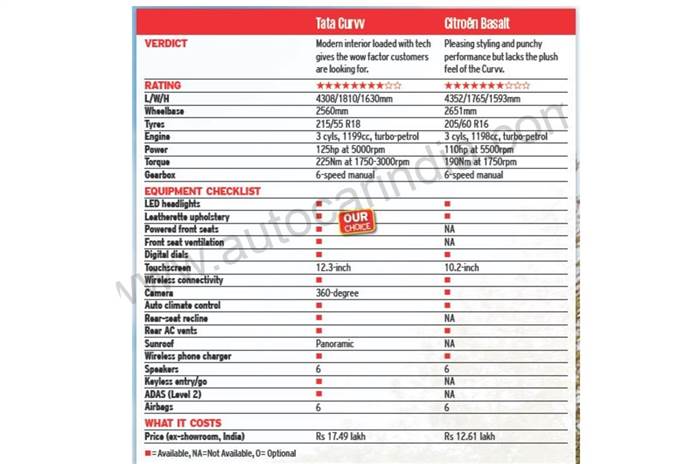
Where the Citroen Basalt edges ahead is in stronger engine performance, engaging driving dynamics, and a more spacious rear seat. Top-spec to top-spec, it also comes in significantly cheaper by a hefty Rs 4.99 lakh, making the Basalt, priced at Rs 12.7 lakh, great value. However, the Tata Curvv is available in a wide range of variants, with prices ranging from Rs 9.99 lakh to Rs 17.69 lakh. Curvv variants priced around the Basalt’s mark still offer more features than the latter. Additionally, the Curvv boasts a far more premium interior, better overall comfort, more refinement, an appealing road presence, and a much stronger dealer network. All these factors would mean more to many buyers, which is why the Tata Curvv gets our vote.
Also see:
Tata Curvv vs Citroen Basalt video comparison
Citroen C3, Basalt, Aircross, C5 Aircross now get 3-year/1 lakh km warranty
Now is the right time to introduce 4WD, says Tata’s Vivek Srivatsa

